#Salicylic pimple patch
Explore tagged Tumblr posts
Text
Salicylic Pimple Patch Side Effect
Delve into the world of salicylic pimple patches to uncover the side effects. Separating fact from fiction, this informative guide sheds light on potential skin reactions, providing essential insights for a safe and effective skincare regimen.

0 notes
Text

Daniel | Day 1 Testing | Bahrain Int Circuit (photo by Rudy Carezzevoli)
#brb getting him a pimple patch for that little pimple on his nose (tho he’s always had it in that same place constantly over the years)#Daniel you need some salicylic acid and a good moisturiser to treat that little irritation under your beard#daniel ricciardo#testing 2024
112 notes
·
View notes
Text
Buy Acne Pimple Patches with Salicylic Acid & Tea Tree Oil – The Bath and Care
Say goodbye to stubborn pimples with Clear Cue Acne-Away Patches from The Bath and Care. These advanced acne patches are specially made to fight breakouts fast and gently. Each patch is made with hydrocolloid, a skin-friendly material that absorbs pus, oil, and impurities from your pimple. This helps reduce swelling and speeds up healing naturally.
These tea tree oil patches create a barrier that prevents you from touching or picking at your acne. This keeps your skin safe from infection and scarring. The thin, clear design makes them perfect for wearing anytime—even under makeup.
Perfect for whiteheads, blackheads, and small inflamed pimples, these patches are safe for all skin types. However, always do a patch test if you have very sensitive skin.
If you are looking for a fast and safe solution for breakouts, this tea tree oil pimple patch is your go-to skincare essential. These acne patches hydrocolloid are a must-have in your skincare kit. Website url: https://thebathandcare.com/products/clear-cue-acne-away-patches
#Acne Patches#acne patches hydrocolloid#tea tree oil patches#acne pimple patch#salicylic acid pimple patch#salicylic acid patch#pimple patches with salicylic acid#tea tree pimple patch#hydrocolloid patches with salicylic acid#tea tree oil pimple patch
0 notes
Text


appearence; "is she glowing?" - glow up guide no.2
Hey love, how are you doin?
Today we'll cover the next part of our glow up journey - our looks. So without further ado, let's begin!
I prepared a list of things you can do in order to boost your looks, and take care of yourself at the same time, so you can glow up<3
FACE:
⟶ don't pick your pimples!!! It's the worst thing you can do when dealing with acne/spots/blackheads etc. Instead go see a dermatologist. You can also use salicylic acid, azelaic acid or pimple patches ⟶ start double cleansing to remove all makeup and dirts from your face. Use an oil cleanser first, and a water based one afterwards. ⟶ use vitamin C to brighten your skin and give it this healthy glow ⟶ diet is also very important to keep your face clean and glowy. Make sure you're not eating too much sugar and processed foods that may cause inflammation. ⟶ use makeup according to your face shape and to enhance your features. ⟶ depuff your face using ice cubes, gua sha and face massages ⟶ When you sleep on our side, your face is pressed against the pillow causing acne and wrinkles, so sleep on your back or invest in a silk/satin pillowcase to reduce friction. ⟶ make sure you're using spf 50 daily
BODY:
⟶ move your body! Find an acitivy that you enjoy and move your body daily. You can go to the gym, find a class (like pilates or spinning maybe?) or just workout at home, stretch or go on walks. I personally love dancing and stretching, and I also try to walk at least 10k steps a day. ⟶ check up at the doctors regularly to make sure you're healthy ⟶ make sure you're sleeping enough, this is very important if you want to feel and look your best. Studies recommend at least 7 hours for and adult, and minimum 8 hours for teenagers ⟶ diet, im sorry but this is key to a healthy lifestyle and body. A healty, balanced diet with lots of fruit and vegetables and whole foods is essencial. Make sure to get enough protein and healthy fats in. I am not a medical professional, so if you have any special needs, allergies or you are in treatment consult any dietetary changes with your doctor or a certified dietetician. ⟶ use a nourishing body wash and after the shower use a lotion to moisturise your skin. And use deodorant after every shower. ⟶ exfoliate using a scrub or an exfoliating glove once/twice a week to keep your skin soft ⟶ you can take a pumice stone to soften the rough skin on your feet, and make sure to clean and cut your toenails. ⟶ find a signature scent, I recommend perfumes as they last longer but scented mists are also good. Bonus points if you have a lotion in the same smell to enhance the scent. ⟶ this is optional, but if you'd like to take your body care to the next level, everything showers are amazing! I do one about every two weeks on sundays. This is the time for you to take a cozy bath, exfoliate, wash your hair, maybe do a face mask? There is no right or wrong for an everything shower, just make yourself feel good and clean the way you like it<3
HAIR:
⟶ wash your hair 2-4x a week depending on your needs. Don't wash your hair daily as it can cause damaged hair and a dry, itchy scalp. If your hair gets greasy easily, try to at least wash it every other day. ⟶ use a hair mask once a week ⟶ I find that the best hair care is according to your hair porosity. You can check it with the glass of water test. Simply take a clean, product-free strand of loose hair and put it in a glass of water. If the hair floats at the top then it is low porosity, if it sinks slowly or settles in the middle it is medium/normal porosity, and if it sinks straight to the bottom then it is high porosity. ⟶ every night before bed apply hair oil to your ends and put your hair in a protective hairstyle such as loose braid to keep it from damage while you sleep. ⟶ use rosemary or argan oil to grow and thicken your hair ⟶ trim split/damaged ends when needed ⟶ you can use a scalp scrubber to better clean all the dirt and scalp build up ⟶ avoid excessive heat and when you do, use heat protection
CLOTHES:
⟶ rather than buying every microtrend that exist, invest in quality pieces and create a capsule wardrobe. Keep in mind to adjust it to your own personal style, or if you don't have one you can look ideas up on pinterest. ⟶ wear accesories! Necklaces, bracelets, sunglasses etc can elevate your looks by 1000x! Find out whether gold or silver fits you the best, or maybe you find diamonds or pearls a better fit? ⟶ keep your clothes clean and neat, iron them when needed to avoid looking slumpy
ESSENTIALS:
⟶ brush your teeth 2x a day ⟶ brush and detangle your hair ⟶ use a lip balm to hydrate your lips ⟶ always keep a hand cream near to use when needed ⟶ get enough sleep ⟶ move your body and eat healthy ⟶ stay hydrated, drink at least 2l of water a day
That's everything for today sparkles, I hope you enjoyed this post and I am waiting for your comments on how your glow up journey is going<3
Find me here: 🤍💿
#navyhealthyglow - all my og content #navyhealthytips - glow up tips #navyhealthyjourney - my glow up journey
My other blogs: 📖💙
@navyisstudying - study blog
#navyhealthytips#navyhealthyglow#that girl#it girl#becoming her#becoming that girl#glow up#wellness#wellness blog#wellness girl#healthylifestyle#healthy habits#glowup#glowingskin#productivity#it girl energy#clean girl#navy girl#tips#aesthetic#it girl aesthetic#pink pilates princess#vanilla girl#smart and educated#dream life#glow up guide#that girl lifestyle
84 notes
·
View notes
Text
SKINCARE TIPS part II.
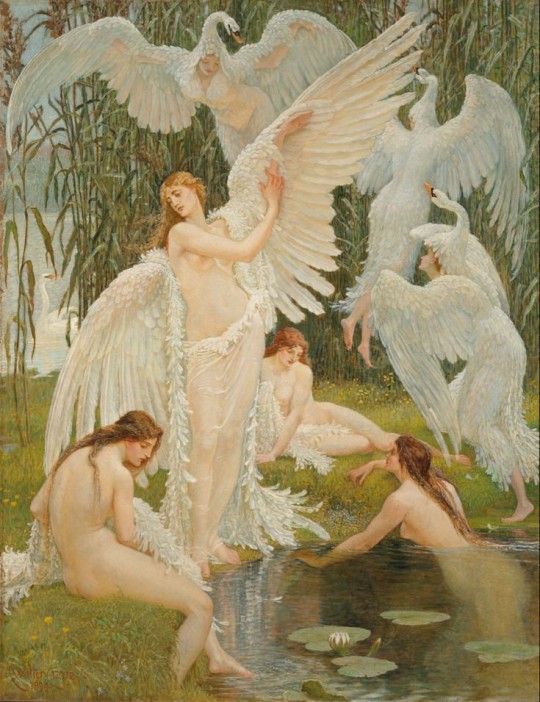
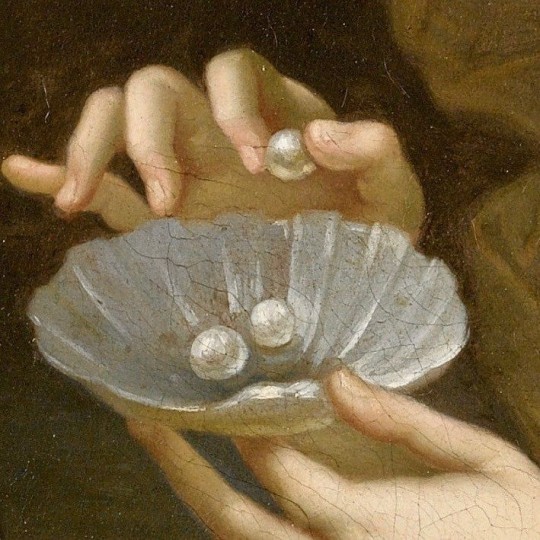
Hello my lovlies, welcome back to a new post! I wanted to come back with something easy and fresh for the beginning of the colder season, since I'm guilty for not taking care of my skin in the fall as much as I am in the summer time. So I want to make a quick post about skincare once again. If you have any questions leave then bellow, I always anwser! With that being said let's get into the post shall we?
〰️ DISCLAIMER
I'm am not a certified dermatologist/cosmetologist, I highly advise to go to one if your having a hard time with your skin! With that being said, let's get into the post. 🕊
TIPS AND TRICKS
I. INTUITIVE SKINCARE
Now I know in the first post I talked about skincare cycling and how that can help to stay on track and it's also very beginner friendly to understand the process and the products that go together. But as time goes and you get into skincare you'll soon realize how good it is to monitor and understand your skin. Some days it will be very dry and patchy and some days it will be immensely oily and clogged. That's why I always recommend having two sets of skincare for different occasions. I work in an environment where my face gets dry patches after a few days, so on those nights I reach for my soothing cleanser and heavier moisturizer. If you're forgetful like me, you can also put an alarm in your calender for monitoring, this also helps me out on those busy weeks.
II. HYGIENE AROUND YOUR SKINCARE
I know many people who don't change their towels, wash cloths after a few days and I'm not saying you're dirty for that, I'm just suggesting you should try changing them everyday. I have 7 wash clothes, which I use once a day (morning and night) and I clean all of them together only with my sheets on the highest temperature. I also stopped washing them with softener, since this can lead to build up over time. If you're worried they will seem stiff, add some white vinegar, they fluff up towels real nice! I advise all my closest friends with acne prone skin to try this out or just use boxed tissues, even though this can be a little pricey and not eco friendly. Not a fan of makeup remover wipes anyway... to add on to this make sure to buy products with pumps so you don't scoop your hands into the product, even if they've been cleaned. Old skin, dust particles and such can get into the product.
III. OVER EXFOLIATING
I know you've heard people say this a million times, but is really is the case, especially if you have reactive/sensitive skin. Stop using exfoliating products more than twice a week. What this can do is a plethora of bad things. From stripping all the natural oils from your skin to dehydrating it, to making it more sensitive than it was before. Patience is the key here.
IV. RETINOL USE
When talking about patience, the first thing that pops up in my head is retinol, because o boy do you need a lot of patience for this. It can seem very intimidating at first but if you stick with simple steps the purging will not be so bad. Retinol makes skin cells turn over faster, by doing so when you start using it, it will push out more dirt than usual. This is the reason people stop using it. They payed so much for this product and now they have to look at a million blemishes popping out of nowhere. Our skin doesn't like big changes and retinol is a big shock to our skin from the start. So I advise in the beginning doing it once a week. I used to have retinol Sundays and yes I did purge, but not so much I had to stop. A pimple or two a week I would say, and with that I would just put pimple patches on them and it would resolve the issue.
Rules for retinol:
1. Never use retinol in the morning, it degrades in the sun. So you're throwing your money down the drain.
2. Don't mix it with vitamin C, salicylic acid and benzoyl peroxide. Yes you can have a skin day where you exfoliate with salicylic acid, but than have a recovery day after. In the same day, I wouldn't recommend it for the majority of people.
3. Never use more than a pea sized amount for a long period of time. Your skin needs to get used to the dosage.
4. I know the "sandwich" method is really popular right now with retinols, but I advise the old fashioned route. Sandwithing is putting a moisturizer before and after a retinol. I like to use a heavy moisturizer after the retinol and that's it. Even if you have acne prone skin, a heavier cream is necessary beacuse retinols dry out skin.
5. Don't apply to damp skin. Even though it may seem like a logical step, it does more damage than good. When applying a retinol to damp skin it penetrates deeper. So this can be quite irritating for your skin.
6. Don't forget the neck area and also your hands!
7. In the beginning do it only once a week and than after a month/two crank it up to twice a week. Really monitor your skin when cranking up the volume of retinol to see if you need to still hold back. Please please please dont rush this step. It's better to hold back a week or two than rushing.
8. Invest in a good sunscreen after getting into retinol and apply it every morning, reapplying every 2-3 hours when doing outdoor activities. If you work only indoor apply in the morning and the moment you exit your work place...that'll do it.
V. SUNSCREEN
For the longest time I didn't invest in some sort of good sunscreen, I have no idea why to be honest with. I guess I was just lazy to be honest. Sunscreen is the most important item to have in your skincare bag. All this money can be spent on creams, toners, moisturizers, retinols and so on...but it means nothing when you don't have UV protection for your skin.
VI. MORE IS MORE
Many think if they have an oily face that they can moisterize less or even not at all. The trick is to find a cream/moisturizer that is not heavy or that clogs your pores. Most of the time you will damage and cause even more blackheads/whiteheads if you don't moisturize because your skin will increase your sebum production. More is more, try out toners as well for amazing hydration!
Also be sure to know that there are 2 types of sunscreen: chemical and mineral.
🖤 Chemical Suncscreens absorb UV rays, acting like a sponge. It's better for oily/acne prone skin because they are lighter than mineral one's. With this being said if you break out easily, you can also try chemical sunscreens. Chemical sunscreens have ingredients like OXYBENZONE, AVOBENZONE and OCTOCRYLENE.
🖤 Minereal Sunscreens reflect UV rays of the skin, they are more suited for babies, sensitive skin and also pregnant women! The ingredients that are in minereal sunscreens are ZINC OXIDE AND TITANIUM DIOXIDE.
IV. BEGINNER ROUTINES
I struggled with this a lot, not even going to lie. When the whole world is just throwing so many products at your face and you just don't know where to begin. What chemicals go together, what is better in the day time, what products should you spurge on etc... I had many problems in the beginning because I was introducing so much to my skin. So I'm going to give a few examples for a beginner skincare routine with some of my favorite products so you don't need to struggle. Also I go by the this too when I'm feeling lazy and don't want to put 10 products on my face.
🖤MORNING
For daytime I recommend just the simple cleanse, moisturize and spf. On to this later you can add hydrating toners, vitamin C, an essence like snail mucin, hyaluronic acid, niacinamide. All of these products can go together!
🖤 NIGHT
Double cleansing in my opinion is a must, even if you have sensitive skin. Start of with an oil based cleanser on DRY skin, message for a minute, rise and than apply a normal cleanser, massage for a minute and rinse again. The oil pulls out gunk from the pores. After that make sure your face is dry and than apply your started retinol followed up with a heavier moisturiser. To this routine later you can also add eyes creams, again essence/and or toners and spot treatments for acne/dark spots.
🖤EXFOLIATION
Even sensitive skin needs exfoliation at less once a week, but be careful to really keep this routine simple. Again double cleanse, only this time the first cleanser is an oil based and the second is a salicylic based cleanser. Follow that up with a very soothing cream. For deeper exfoliation later you can look into exfoliation masks (the ordinary has one with salicylic acid) or a clay mask. Or my personal fave on exfoliation night is aloe vera gel and snail mucin. Glycolic acid and lactic acid are also an exfoliating product.
Hope you enjoyed the post!
xoxo NK
#skincare#dry skin#skincare tips#exfoliation#cleansers#essence#hydration#skincare products#aloe vera#salicylic acid#morning routine#night routine#tips#help#ask
178 notes
·
View notes
Note
I’m sure you’ve been asked this before, but what’s it like having a dog who needs to wear clothes all/a lot of the time? Do breeders usually train puppies to be good about that—or rescues work with the dogs about it? Or is it more of an as needed thing where some dogs don’t need to wear clothes so much? And I remember hearing that there’s a lot of maintenance for their skin, but what about the fur they do have (the little patches, not necessarily the coated dogs); I’d guess it's not much different than a fully-coated dog just because there isn’t much of it?
Also, I think Nico has the same--but much smaller--harness as one of my family’s dogs. This isn’t relevant, but it is pretty fun seeing a tiny version of it (or something very similar) in the wild.
Honestly the needing to wear clothes frequently is my biggest complaint about hairless xolos 😂 Don't get me wrong, it's fun to have a dog whose look you can so easily customize so drastically! But also, having to swap clothes, make sure your dog is in the right level of clothing for the weather, and whatnot before going out can be a hassle for me and for the dog. Clothing also collects dirt and oil at different rates so the fabric choice you make is really important. For instance, fleece collects dirt like mad so even though it's soft it's really not ideal for xolo clothing because it can cause pimples to form really quickly. Other fabrics aren't as comfortable on the skin and so speaking of that harness, it has a mesh interior that doesn't feel very nice so I prefer he has a shirt between it and his skin to prevent irritation from any chafing. (Keeping it snug helps that but can't prevent it entirely either...) Aside from protecting them from the cold, you also need to make sure that xolos with unpigmented skin have sun protection. That means clothing or sunblock. Plus the expenses of buying said clothes which can be a pretty penny when it comes to quality brands.
But on the flip side, I don't have to worry about a matted coat or spending thirty minutes getting mud off my dog either because bathing him takes five minutes from start to finish (unless the shampoo needs to sit). Nor do I need to spend a lot of money on grooming either. So in the end it's really just picking where you want your time, energy, and money spent.
As far as skin and coat care, the skin care regimen will truly differ from dog to dog. Some xolos have basically no skin problems. Some have really bad skin issues their whole life. Others just get hormonal acne as adolescents and then they clear up. And others still have skin issues caused by diet or environmental factors that will get cleared up by changing whatever is causing them. Tzapo has basically no skin issues and just needed the occasional blackhead or pimple resolved. Nico has more skin problems but he was neglected as a puppy, doesn't have a stellar breeding line like Tzapo did, and he's an adolescent so it's hard to predict if these issues will be a constant problem or if he'll wind up with low maintenance skin. I'm hopeful that he will have less skin issues in time but if not, there are medications and special shampoos to help with dog acne, including some made with salicylic acid just like human acne products 😅 but their hair is really low maintenance especially in the (mostly) hairless variety. I occasionally detangled Tzapo's tail plume but that was it.
I am unsure of the extent that breeders go to desensitizing puppies to clothes but it's definitely something they should do considering many xolos will benefit from it. I think hairless xolos probably are easier to acclimate to clothing if only because it does make them more comfortable. I know that if it's cold Nico is way more thrilled to put his clothes on that when it's warmer. Tzapo was the same.
#dogblr#xoloitzcuintli#xolodog#xoloitzcuintle#mexican hairless dog#thank you for the ask! i really appreciate the distraction 🩵
37 notes
·
View notes
Text
The Basics of Skin Care
A 100 skincare tips for beginners:
Cleansing:
1. Cleanse your face twice a day.
2. Use a gentle, sulfate-free cleanser.
3. Avoid hot water, as it can strip natural oils.
4. Use a cleansing brush or washcloth for gentle exfoliation.
5. Remove makeup before bedtime.
6. Double cleanse if you wear heavy makeup.
7. Don't over-cleanse; it can lead to dryness.
Exfoliation:
8. Exfoliate 1-3 times a week, based on your skin type.
9. Choose chemical exfoliants like AHAs or BHAs.
10. Be gentle when physically exfoliating.
11. Avoid over-exfoliation to prevent irritation.
Moisturizing:
12. Use a moisturizer suitable for your skin type.
13. Apply moisturizer while your skin is slightly damp.
14. Don't forget your neck and chest.
15. Consider using a humidifier in dry climates.
Sun Protection:
16. Always wear sunscreen, even on cloudy days.
17. Use a broad-spectrum SPF of at least 30.
18. Reapply sunscreen every 2 hours.
19. Wear protective clothing and sunglasses.
20. Avoid tanning beds and excessive sun exposure.
Anti-Aging:
21. Use products with antioxidants like vitamin C.
22. Apply retinol at night for anti-aging benefits.
23. Consider peptides for collagen support.
24. Stay hydrated to maintain skin elasticity.
25. Get enough sleep for skin repair.
Hydration:
26. Drink plenty of water for overall skin health.
27. Use a hydrating serum or hyaluronic acid.
28. Avoid hot showers that can dry out your skin.
29. Limit alcohol and caffeine intake.
Acne Management:
30. Use salicylic acid for acne-prone skin.
31. Don't pop pimples; it can lead to scarring.
32. Change pillow cases regularly.
33. Maintain a balanced diet to reduce breakouts.
34. Consult a dermatologist for severe acne.
Skincare Routine:
35. Develop a consistent skincare routine.
36. Patch test new products.
37. Customize your routine based on your skin's needs.
38. Consider professional facials occasionally.
Makeup:
39. Clean makeup brushes and sponges regularly.
40. Avoid sharing makeup to prevent infections.
41. Choose non-comedogenic makeup products.
42. Remove makeup before going to bed.
Eye Care:
43. Use an eye cream to address under-eye concerns.
44. Be gentle when applying and removing eye makeup.
45. Get enough sleep to reduce under-eye puffiness.
Lifestyle:
46. Manage stress to prevent skin issues.
47. Get regular exercise for better blood flow.
48. Avoid smoking and secondhand smoke.
49. Limit alcohol consumption.
50. Eat a balanced diet rich in fruits and vegetables.
Special Treatments:
51. Use a face mask 1-2 times a week.
52. Try sheet masks for extra hydration.
53. Consider facial oils for added moisture.
54. Use a lip balm to prevent chapped lips.
Skin Conditions:
55. Consult a dermatologist for skin conditions.
56. Use products with soothing ingredients for sensitive skin.
57. Eczema-prone skin should avoid harsh products.
58. Rosacea-prone skin should use gentle, non-irritating products.
59. Psoriasis-prone skin may benefit from salicylic acid.
DIY Skincare:
60. Be cautious with DIY treatments; research first.
61. Natural ingredients like honey and aloe can be beneficial.
62. Avoid DIY recipes with harsh or abrasive ingredients.
63. Test DIY masks on a small area first.
Sleep:
64. Get 7-9 hours of sleep for skin regeneration.
65. Sleep on a silk or satin pillowcase to reduce friction.
Hands and Feet:
66. Moisturize hands and feet, especially in winter.
67. Use sunscreen on your hands to prevent age spots.
Body Skin Care:
68. Don't forget to moisturize your body.
69. Exfoliate your body regularly.
70. Take short, lukewarm showers to prevent dry skin.
Shaving:
71. Shave in the direction of hair growth.
72. Use a sharp, clean razor.
73. Apply a moisturizing shaving cream.
Hair Care:
74. Use a gentle shampoo and conditioner.
75. Avoid hot water when washing your hair.
76. Protect your hair from UV damage.
Hormonal Changes:
77. Adjust your skincare routine during hormonal changes.
78. Birth control can affect skin; consult a dermatologist.
79. Manage menopausal skin changes with skincare.
Allergies:
80. Be aware of allergens in skin care products.
81. Perform a patch test for new products.
82. Hypoallergenic products can be a safe choice.
Tattoo Care:
83. Follow aftercare instructions for tattoos.
84. Use a mild, fragrance-free lotion.
85. Avoid direct sunlight on a healing tattoo.
Skin Care Tools:
86. Cleanse skincare tools regularly.
87. Replace loofahs and brushes when they wear out.
Consult a Professional:
88. If you're unsure about a product, ask a dermatologist.
89. Consider professional treatments for specific concerns.
Inflammation:
90. Use products with anti-inflammatory ingredients.
91. Manage skin redness with calming products.
Massage:
92. Gently massage your face for better circulation.
93. Use upward motions to prevent sagging.
Eyes and Lips:
94. Use SPF lip balm to protect your lips.
95. Choose an eye cream with ingredients like caffeine.
Preventive Care:
96. Start a skincare routine early for preventive care.
97. Be patient; skincare results take time.
98. Embrace your natural beauty.
99. Avoid comparing your skin to others'.
100. Remember that skincare is individual; what works for one person may not work for another.
These tips can help you maintain healthy and radiant skin. However, always consult a dermatologist for personalized advice based on your skin's unique needs.
102 notes
·
View notes
Text
Deep Acne Patch For Face- Explained
Do you know about the benefits of our Deep Acne Patch? Can it heal cystic acne? Does it have side effects? Uncover the science behind this advanced acne patch for the face and get radiant, blemish-free skin today. Click now.
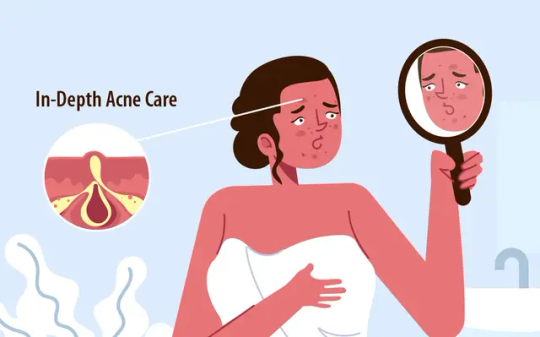
0 notes
Text

Glow Naturally: The Ultimate Guide to Healthy Skin:
In a world where filters are just one pressure away and skincare shelves are filled with endless alternatives, discovering healthy skin can feel overwhelming. But what if we told you that light, flexible skin is not about expensive cream or a 10-step routine? It's all about balance - inside and out.
Let's peel the layers back (pun intended) and discover real secrets for healthy skin. No fluff, no fads — just science-backed, soul-nourishing skin wisdom.
What does "healthy skin" mean?
Healthy skin is not just about being blemish-free. It's about texture, tone, hydration, and flexibility. It lights up with subtlety, feels soft to the touch, and acts as a strong barrier to environmental stressors.
Healthy skin signs:
Even tone and texture
Proper hydration (not too oily, not too dry)
Minimal breakouts or inflammation
Quick healing from minor cuts or irritation
A natural glow (yes, it's real!)
Your skin talks: Do you listen?
Your skin is the largest part of your body and it sends frequent signs of your inner health. Dried patches, sudden pimples, dullness - these are not just cosmetic concerns. They ask for care of your body (sometimes shouting).
The skin is a mirror. What happens outside often shows what is happening inside.
The Pillars of Healthy Skin
1. Nourish from Within
Healthy skin starts in your kitchen, not in your bathroom.
Hydration is the Queen: Drink 8-10 glasses of water a day. Infuse it with lemon, mint, or cucumber for extra benefits for skin lovers.
Load up on antioxidants: Berries, leafy vegetables, nuts, and seeds fight oxidative stress leading to premature aging.
Healthy fats = Happy skin: Avocados, walnuts, olive oil, and fatty fish (e.g., salmon) support cell membranes and prevent dryness.
Limit sugar and processed foods: Excessive sugar promotes inflammation and breaks collagen - a protein responsible for skin elasticity.
Pro tips: Skin likes color. The more colorful your plate, the better for your face.
2. Skin Care: Less is More
Let's simplify your routine.
Cleanse gently (twice daily): Avoid harsh soap. Use a pH-balanced cleanser that fits your skin type.
Moisturize always: Even oily skin needs moisture! Look for lightweight, non-comedogenic formulas.
Sunscreen is non-negotiable: Daily SPF (30 or above) for early aging, sunspots, and skin cancer.
Exfoliate smartly: Exfoliation is sufficient once or twice a week. Over-exfoliation damages the obstacle of the skin.
Golden Rule: If you feel tight after washing your skin, exaggerate it.
3. De-stress your Skin
Stress just doesn't play with your brain - it messes up with your skin.
Chronic stress increases cortisol, which triggers oil production and breakouts. It also aggravates conditions such as eczema, psoriasis, and rosacea.
Stress with:
Daily meditation or a deep breath
Regular workouts
Adequate sleep (7-8 hours)
Ironing or hobby
Skin treatment is the only therapy.
4. Beauty Sleep is Real
Nighttime occurs when your skin is repaired and revived.
Wash your face before bed - always.
Use a nutritious night cream or serum with ingredients such as retinol, hyaluronic acid, or peptides.
Change the pillow often. It can interfere with bacteria and oils.
Sleep = Skin Reset button. Don't skip it.
5. Smart Skincare Ingredients to Know
Decode your products.
Vitamin C: Brightens, fades dark spots, and increases collagen.
Niacin mide: Control oil, tighten the pores and soothe redness.
Hyaluronic acid: Deep hydration, plumps skin.
Salicylic acid: Fight pimples and closes the pores.
Retinol: Gold standard for anti-aging (use with caution and sunscreen).
Begin with one active ingredient. Don't overwhelm your skin.
Men, women, and teenagers - Skin Health is for everyone.
No, skin care is not just for women or influencers. Everyone has the right to healthy skin - regardless of age, gender, or lifestyle.
Teens: Focus on gentle cleanser and pimple prevention.
Men: Cleanse, moisturize, and protect with SPF - no shortcut!
Seniors: Emphasis on hydration, sun protection, and barrier repair.
Nature's Bonus: Working Home Remedies
Sometimes Grandma was right.
Aloe Vera: Quiet irritation and hydrates.
Honey + turmeric: fights pimples and brightens the skin.
Raw milk + oats: Gently exfoliate and soften the skin.
Always do a patch test before using something new.
Takeaway: Be kind to your skin
Your skin does not need to be flawless - it must be taken care of. Completion is a myth. Consistency, nutrition, and mindfulness go a long way.
So the next time you look in the mirror, don't focus on a grain or wrinkle. Notice how far your skin is. Listen to it. Feed it. Protect it. And above all, they love it.
Because healthy skin is not just a goal - it's a lifetime relationship.
Bonus: Mini's Quick Glow checklist
Drink water before coffee or tea.
Wash twice daily face
Use SPF every day (even indoors)
Eat the rainbow
Sleep like a baby
Take deep breaths and smile often
Glow is a habit, not a marker. Start today.
A note from Nutazin
At Nutrazin, we believe that real beauty begins with wellness. Our science-supported, rich nutrients are designed to nourish your skin from the inside because glowing skin is not made in a laboratory, it’s nurtured by nature.
Stay glowing. Stay nutrazin.
#health tips#skincare#skin health#health and wellness#healthyskin#health#nutrazin#public health#wellnessjourney#healthy eating#healthyliving#health & fitness#skin heads
2 notes
·
View notes
Note
I have to take important pictures tomorrow and my face is FULL of pimples (I never have any💔) and idk what to do. Any tips?🥲
hi lovely!!! what you can do now truly depends on what you currently have at home. i'll do my best to cover everything i can :)
most importantly, you should gently wash your face with lukewarm water before you go to bed and when you wake up tomorrow with a facial cleanser or a mild soap. check the ingredients beforehand; products with high concentrations of alcohol or perfume are usually not good for your face, especially not pimples!
if you happen to have any skincare products that contain salicylic acid (usually found in things like serums or pimple patches), applying that before bed would work. pressing ice to the area is also known to reduce swelling and redness, so i'd definitely recommend that.
i'm not sure whether you're comfortable using make-up or not, but minimally covering them up with a concealer is effective. but don't do anything you're not comfortable with!
lastly, as much as it sucks to hear, pimples are common. our skin is affected by a lot of factors like skincare products, the weather, stress, sleep routines... we can't control it, and regardless of what your skin looks like tomorrow, the best advice i can give you is to just shrug it off; i'm sure you'll look great in the photos either way x
5 notes
·
View notes
Text

Heheeeeeehooohahahaha
This is my life, and it's so cool I get to just evolve into a Dude now for the foreseeable. I can't wait to not have a femme voice tbh. I keep checking my voice even tho I know it can take years to change hdbdbd.
I have so much hair everywhere and it's growing so fast though. Even on my face it's already coming in stubbly and I only shaved like two days ago!! This is so exciting for me I can't tell you how hyped I am tbh
I also have some more wiry and coarse beard hair too so that's a positive making me look less like a teenage boy.
Acne isn't fun tho. Everything I pick at grows 5 times bigger :/ (I have skin picking disorder/dermatillomania/I sensory seek by picking my skin/etc I've been told its all of those things at one point or another) I've bought some pimple patches and some good skincare too which is arriving today and with my CeraVe salicylic acid cleaner I'm hoping the toners and treatments/serums I bought can help stop the scarring and the picked stuff getting infected at least.
That's my biggest downside I think so far to being on T. The spots and blackheads and oily skin. Just cause of my dermatillomania sucking ass, it makes it sooo hard not to pick when I know I've got blemishes.
3 notes
·
View notes
Text
How can you tell if a skincare product is right for your skin type?
Choosing the right skincare product for your skin type is crucial, and the key is to observe your skin’s reaction. Here are some methods to help you determine if a product is suitable for your skin:
1. Understand Your Skin Type
First, you need to identify your skin type:
Oily skin: Produces excess oil, prone to acne or breakouts.
Dry skin: Feels tight, prone to flaking, and lacks radiance.
Combination skin: Oily in the T-zone (forehead and nose) and dry in the U-zone (cheeks).
Sensitive skin: Easily irritated, prone to redness, stinging, or allergic reactions.
2. Conduct a Patch Test (Especially Important for Sensitive Skin)
Behind-the-ear test: Apply a small amount of the product behind your ear and observe for 24 hours for redness, itching, or irritation.
Chin or wrist test: Apply the product to these areas and monitor for 48 hours to check for any allergic reaction.
3. Observe Your Skin During the Initial Use (1-2 Weeks)
Suitable skincare products: Keep your skin stable, smooth, and balanced without causing irritation.
Unsuitable skincare products: Allergic reaction (itching, redness, stinging) Clogged pores or breakouts (emergence of whiteheads, blackheads, or pimples) Excessive dryness or oiliness (skin feeling too tight, flaky, or oilier than before)
4. Analyze the Ingredients
Best for dry skin: Hyaluronic acid, ceramides, glycerin, squalane, and other hydrating ingredients.
Best for oily skin: Oil-controlling ingredients such as niacinamide, salicylic acid, and tea tree oil.
Best for sensitive skin: Avoid alcohol, fragrance, and excessive preservatives. Opt for soothing ingredients like centella asiatica, oat extract, and ceramides.
2 notes
·
View notes
Text
3 Types of Patches for Acne and Pimple Treatments
Hydrocolloid patches have been used by doctors for many years to treat open wounds.
These patches consist of three layers:
Adhesive Layer: The layer that sticks to the skin.
Hydrocolloid Layer: This middle layer contains ingredients that act as “gunk magnets,” pulling out impurities from open pimples and acne.
Outer Layer: The thick, visible layer that holds the patch together.
What Do Hydrocolloid Patches Work On?
These patches only work on open pimples (with white heads) and acne. They are not effective on closed pimples or blackheads.
How Do They Help?
Hydrocolloid patches speed up the healing process by:
Removing gunk: The hydrocolloid layer pulls out impurities, making it easier for new skin to heal.
Protecting against UV rays: They provide partial protection against UV rays, preventing further inflammation and damage.
Retaining moisture: These patches help the skin retain moisture, which is essential for healing.
Preventing bacterial infection: They protect the area from environmental bacteria and contaminants.
Preventing skin picking: The patch discourages you from touching or picking the area, reducing the risk of further inflammation, scarring, and post-inflammatory hyperpigmentation.
Important Note
Not all patches are beneficial for healing. Some may even worsen the area, which I’ll discuss later in this video.
The Three Types of Patches
1. Plain Hydrocolloid Patches
These are simple hydrocolloid patches without additional skincare ingredients. The hydrocolloid layer does most of the work by pulling out gunk from the open pimples or acne.
Product Recommendations:
Derma Do Invisible Patches
PM Overnight Patches
COSRX Acne Pimple Patch
Hero Mighty Patch
NE Scale Patches
Bodywise Hydrocolloid Patch
Patches to Avoid: Gush Patches, which contain citrus oils and fragrances—ingredients that can irritate inflamed areas.
How to Use:
Cleanse your face thoroughly.
Apply the patch directly to the pimple or acne area, without applying any skincare products underneath the patch.
After applying the patch, you can gently apply skincare products to the rest of your face, but not over the wound or patch.
2. Hydrocolloid Patches with Skincare Ingredients
These patches contain additional ingredients like salicylic acid, tea tree oil, botanical oils, hyaluronic acid, or benzoyl peroxide. The idea is to deliver healing ingredients directly to the affected area.
Some patches have both a hydrocolloid section and skincare ingredients, while others may just have the skincare ingredient without the hydrocolloid part.
Important Points:
Skincare ingredients in patches are more concentrated than when applied to the entire face or as a spot treatment. Therefore, a lower concentration is recommended.
Avoid patches with botanical oils or tea tree oil, as sealing these ingredients on an inflamed area can cause irritation.
Hyaluronic acid patches are beneficial as they hydrate the skin.
How to Use:
Cleanse your face.
Ensure no skincare product is applied under the patch.
Place the patch directly on the clean, affected area.
Product Recommendations:
Numa Pimple Patch
Peace Out Skincare Patch
3. Hydrocolloid Patches with Microneedles
These are similar to the second type but contain tiny microneedles that help push the skincare ingredients deeper into the skin. The microneedles are painless.
Important Points:
Avoid patches with botanical oils or tea tree oil, as they can irritate the skin.
Stay away from patches containing perfume, as fragrance can aggravate the area.
Product Recommendations:
Mighty Patch
ZitSticka
Dermaco Microtip Patch
Final Warning About All Three Types of Patches
Remember, these patches don’t treat acne directly; they aid in healing by creating a safe environment for recovery. They are also useful for mosquito bites, as they prevent you from scratching the affected area, helping it heal faster.
I hope you found this video helpful! If you did, please give it a like and subscribe to my channel. Thanks for watching, and bye for now!
Below is a video on my YouTube channel that is about this - Which Pimple Patches Work the Best
youtube
2 notes
·
View notes
Note
hello my derma queen do you have any recommendations for spot patches or spot treatments that actually work? xxxx
don’t use pimple patches!!! literally every time i use one i’m left w a dark spot and it pisses me off so bad
i think using a low percentage salicylic acid serum as a spot treatment could work, unless you’re allergic to aspirin. PSA if you’re allergic to aspirin don’t use salicylic acid it will fuck you up.
2 notes
·
View notes
Text
no one asked but here's my skincare routine xx 🌚 (including pictures of all the products !)
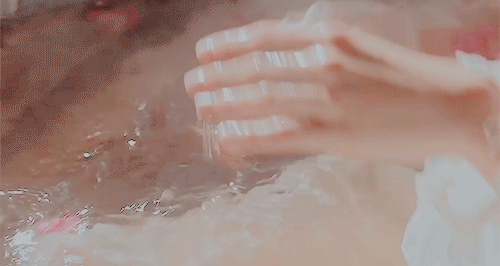
i'm a teen with acne-prone slightly sensitive skin that gets oily by the end of the day🧖♀️
(i'm 99% sure i'm allergic to salicylic acid bc it didn't help with my breakouts/caused them so i avoid it in my routine❕)
as a makeup remover i use the elf holy hydration makeup melting balm 🚿

& a makeup eraser cloth 🧽

for stubborn waterproof eye makeup i use garnier skin active micellar cleaning water all-in-1 waterproof (aka the blue one) i have a huge bottle of it :)💧

(i want to start using reusable cotton rounds so pls lmk of any good brands !)
i just ran out but if i haven't worn makeup but my pores feel especially clogged i use the burt's bees oil cleanser 🥥 (you do have to double cleanse with a water based cleanser afterwards !)

for a daily water-based facial cleanser i use two different ones
the cerave foaming facial cleanser 🧼 "oil control" on the bottle is no joke ! i don't get oily in the day anymore bc of the niacinamide in this :)

but it can be a little drying/strong so i mix it with the cetaphil gentle skin cleanser 🛁

i use this really cheap & generic silicone face scrubber for my nostrils/chin/sideburn-hairline area 🧽

once a week i use this scrub pixi peel and polish its a mask with physical and chemical exfoliants
it smells like lemon cucumber water🥒 and can also be used for body acne on the chest, back, & arms !!
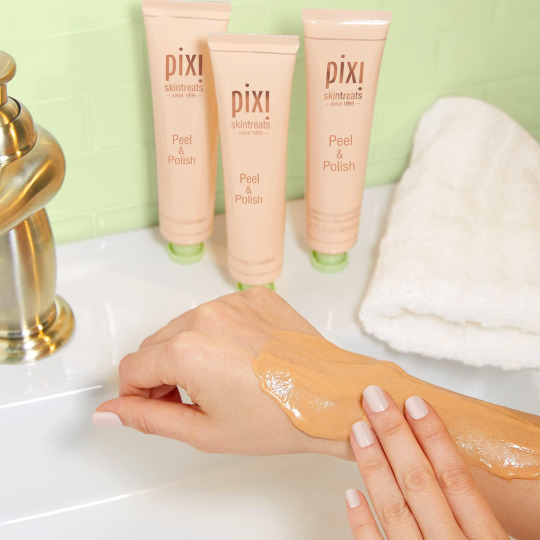
once a week i use an AHA chemical exfoliant it's elf supertone toner 🌝 it has glycolic acid and is has a little bit of a lemony scent
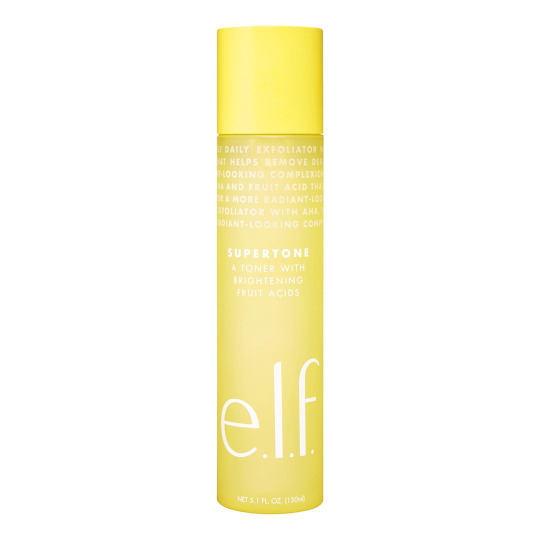
what i use as a daily toner is thayer's rose-scented witch hazel spray 💌 it calms down any redness i have instantly !
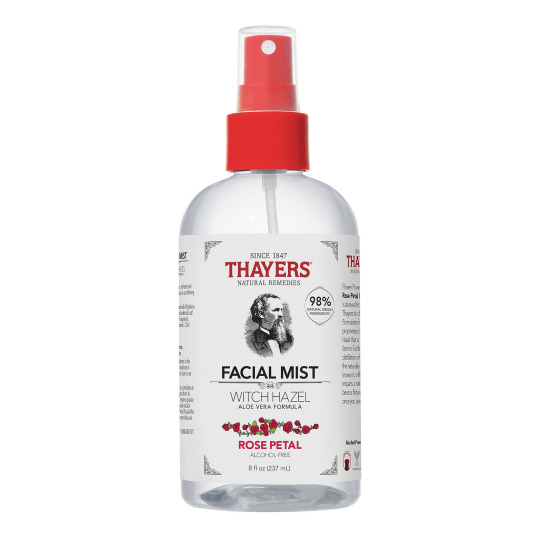
i used to use the cerave daily moisturizing lotion but it was a little oily and it was impossible to apply makeup on 🧘 so now i use it on my hands before doing my facial moisturizer
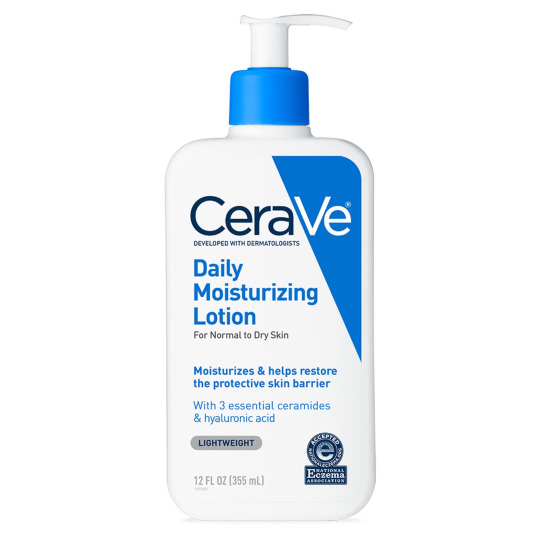
and for that i use a mix of elf holy hydration gel-yeah moisturizer and elf holy hydration face cream 💦 it's pretty self-explanatory but the former is a clear gel and the latter is a white cream, i adjust the proportions for my moisture needs :) ⛲️
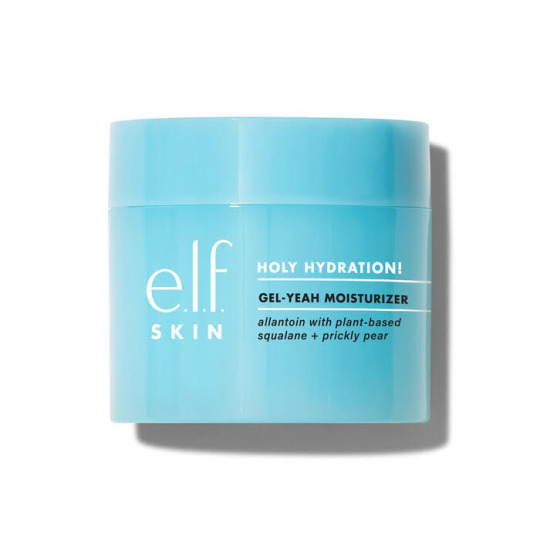
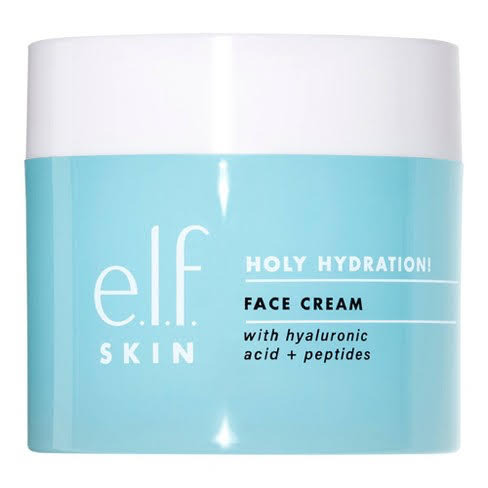
in the winter or if my face feels dry or in need of healing i use clinique moisture surge overnight face mask 🦪
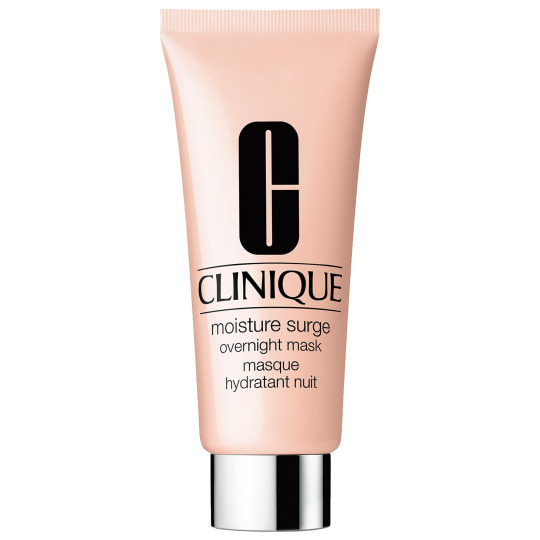
"mask" is a little misleading as you just apply it with your moisturizer like any other lotion 🧴 it's super hydrating, it's a little expensive but i got it as a gift and a little goes a long way ! :)
after a breakout has healed completely i use a little bio oil on top of my moisturizer to fade any dark spots/scars 🐚
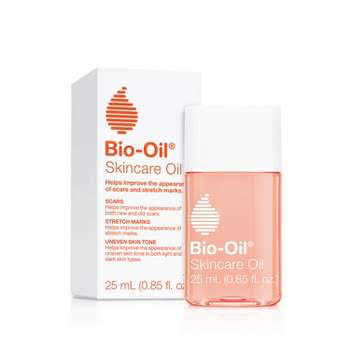
after i shower and exfoliate my lips i use this random lip mask from bath and body works that's watermelon scented 🍉 it's thick (a little goes a long way) and yummy
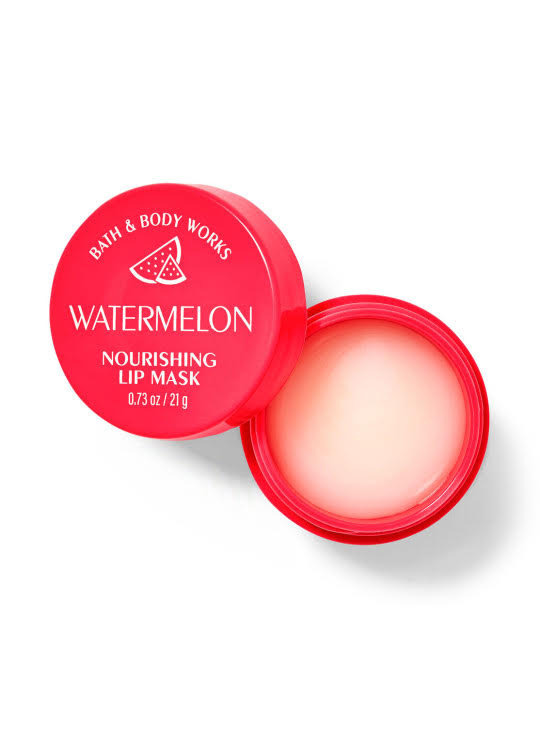
i also use smith's rosebud salve in this tin 🌹 it's like a nice scented vaseline
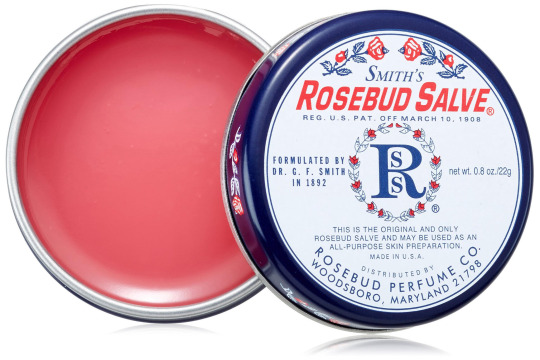
i don't use it all the time bc it's expensive but i love the mario badescu caffeine eye cream💆it's so good for my sunken dark circles ! but avoid getting it in your eye and keeping it in the bathroom bc it curdles if it gets too hot from shower steam

for active acne spots i use might patch pimple patches 🩹regular for whiteheads and micropoint ones for swollen spots under the skin
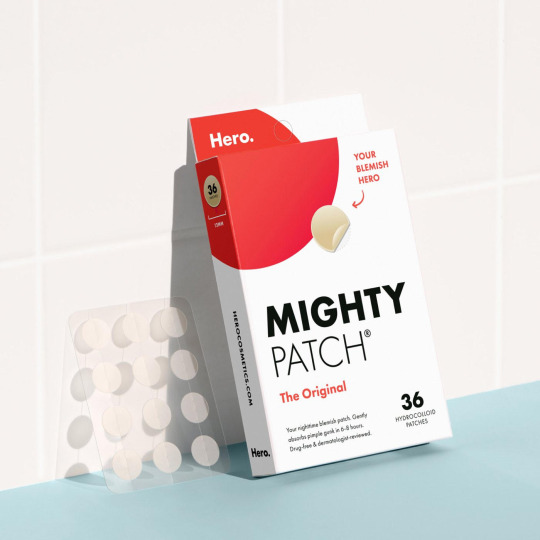
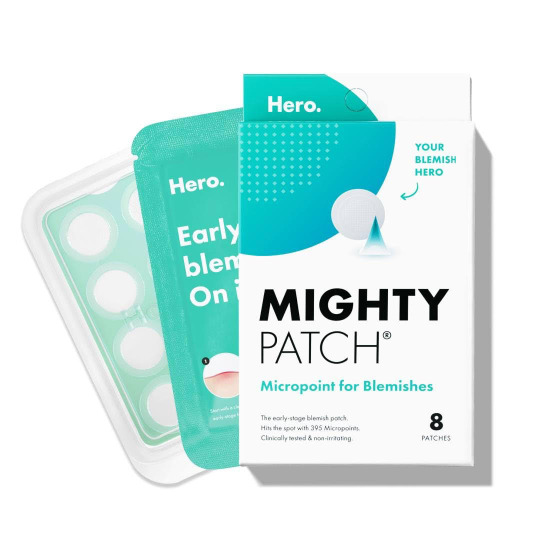
those are pretty expensive so for smaller spots i use mario badescu drying lotion overnight 🫧
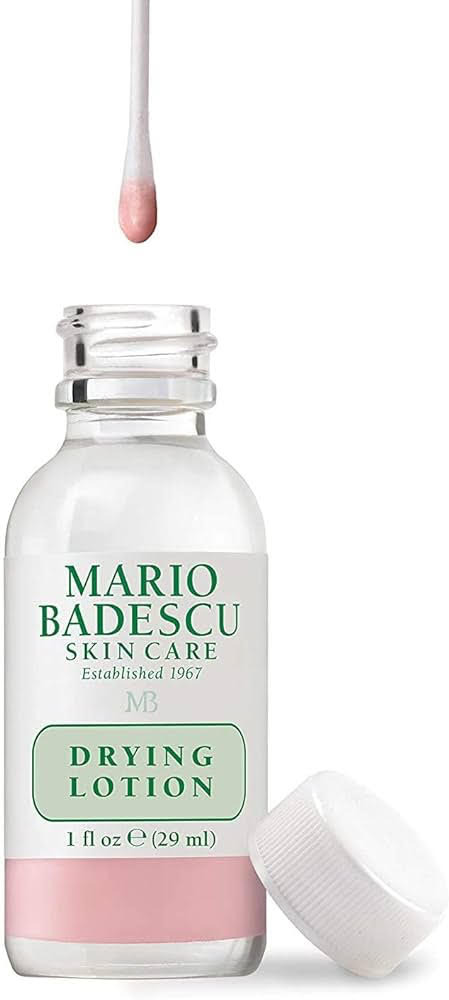
i'm pretty bad at remembering sunscreen in the morning but i just got the glow recipe dew balm with spf 45 and niacinamide 🌸 i love the glow and the light fruity scent :)
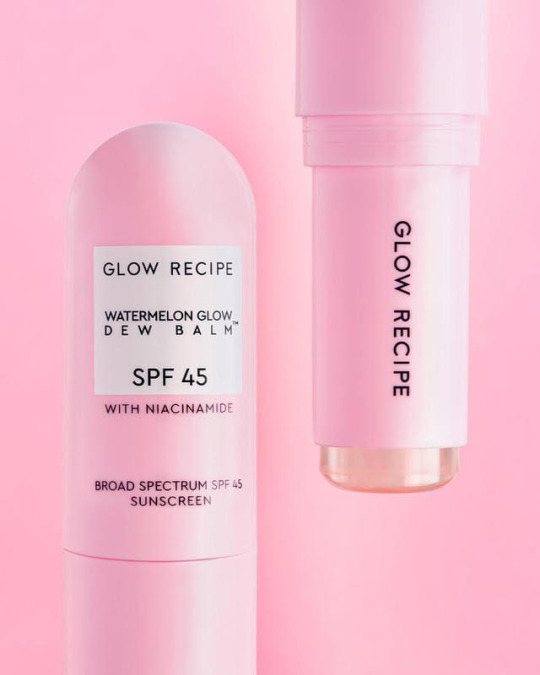
i do want mention that my life-saver game-changer for stopping cystic acne (those painful lumps deep in the skin) and just acne in general has been hormonal birth control pills ! after i started BC for pcos/hormonal reason all of my breakouts decreased significantly🪽

tysm for reading !! 🕊️ xx
#skincare#skincare routine#that girl skincare routine#that girl#just girly things#acne#acne treatment#sensitive skin#breakouts#makeup#makeup remover#eyes lips face#elf skincare#waterproof makeup#pores#cleanser#cleansing balm#cleansing oil#micellar water#sebaceous filaments#cerave#cerave cleanser#cetaphil#cetaphil cleanser#oily skin#acne prone skin#face#exfoliation#exfoliator#scrub
3 notes
·
View notes
Note
Scientist anon again lmao sorry forgot to add! Yes slugging is a thing! It’s great for your skin!!! Aquaphor and Vaseline are the best when you’re slugging! Also, if you’re still having breakouts, I recommend only spot treating. I typically use the Kate Somerville drying lotion and hydrocolloid patches. They are the best at removing dirt and gunk from the pores. The drying lotion is for active breakouts you wanna suppress.
In the future I recommend the Peter Thomas Roth sulfur mask. It’s never given me problems before and works amazing. The pimple patches I find that are the best out there are: ZitSticka (traditional hydrocolloid patches not their microneedle ones), Hero Blemish Patches (they have big ones for larger areas of the face), and Peace Out! Zit stickers! The Peace Out ones are some of my husbands favorites! Try to avoid the “fun” ones. They are cute but typically dont work and a lot of them don’t have the hydrocolloid in them to draw out the pus and other yucky stuff
Also, avoid any face cleansers that contain salicylic acid or benzoyl peroxide. They will likely dry out your skin even more and make it worse. When you have active breakouts the trick is to hydrate and spot treat. Especially when you have sensitive skin! Use something that probably contains some form of colloidal oatmeal or aloe Vera. The active ingredients and the most concentrated will be at the top of the ingredients deck so always look out for that. If denatured alcohol is at the top, try to avoid them as they exacerbate dryness in the skin.
Sorry for all the info dumping! T•T learning about skincare has been my hobby for years because of what I wanted to do as a profession and because of my sensitive skin lmao. I have had to curate my products very carefully!
If you have any other questions let me know! ^•^
hi!!! wanted to let u know i tried slugging tn and it’s def an interesting feeling lmao i’m glad the nights are colder now or else i would be miserable 😩 fingers crossed tho!!
i highkey hate the starface patches! i use the ones from cosrx that i’ve been using since high school and i swear by them :)
i can’t thank you enough for your help 🫶 i’ve been into skincare for years but i def lack in research and am too easily influenced by whatever product’s viral lol sharing this to help other people who might be experiencing the same things :) ty ty scientist anon i literally love you so much
1 note
·
View note